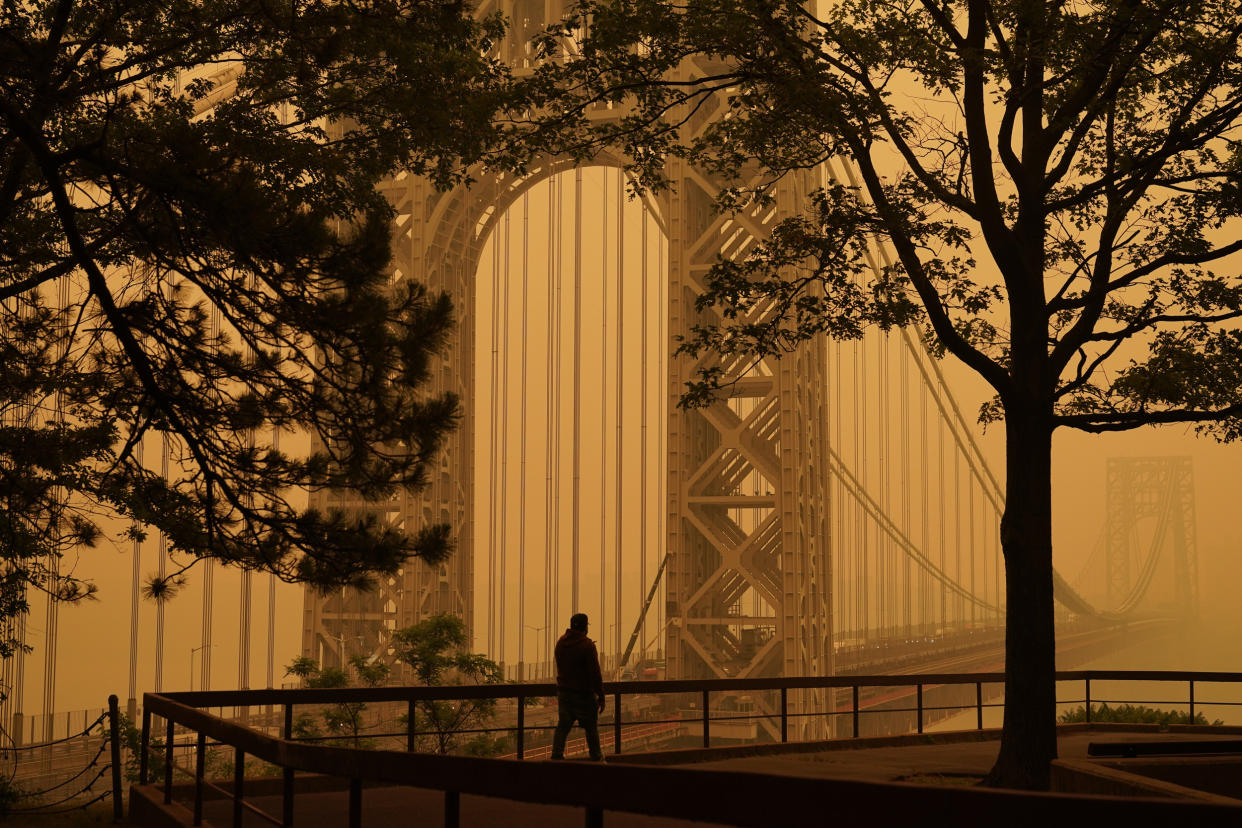Why has smoke from recent wildfires turned the sky orange?
The eerie scenes of orange skies have returned as Midwest cities like Chicago and Detroit, plus much of the Great Lakes region, found themselves shrouded in smoke from Canadian wildfires this week.
The latest hazardous air conditions come after a large swath of the Northeast endured the same issues last month, leaving haunting views of New York City that looked scenes from "Blade Runner 2049."

Cities in the West have also experienced the same issue, most notably San Francisco during California wildfires in 2020.
The orange hue is a tangible sign of poor air quality that has health experts urging people to stay inside if possible and limit their exposure to it.
Why is the sky orange?
Sunlight is made up of white light, which contains all of the colors of the rainbow. The interference of the smoke alters how we see it.
"When there's all these smoke particles in the air, they block some of the colors from reaching your eyes," TODAY meteorologist Dylan Dreyer tells TODAY.com. "They block the blues, the purples, the yellows, so what you're left with is reds and the oranges."
Orange hues are usually seen at certain times of the day, which is why at some points the sky has a more gray-ish haze and other times it's orange.
What a difference a day makes! Here's a view of downtown Pittsburgh from this time yesterday vs. this morning.
🚨 An Air Quality Alert remains in effect for western PA through midnight tonight. #pawx
📷Webcam: https://t.co/GcRoLWXREe pic.twitter.com/nPFLNfv9gM— NWS Pittsburgh (@NWSPittsburgh) June 28, 2023
"You tend to have the orange at sunrise and sunset," Dylan said. "The wind is so light in the morning, and you tend not to have as much smoke, but the smoke builds up during the day. At sunset, the light from the the sun has to travel through a lot more atmosphere, so since it's traveling through many, many particles, it almost enhances the whole phenomenon."
She added that when the sun is low in the sky, "it's almost doubling and tripling how many particles that ray of light is running through."
Why is the sky normally blue?
Earlier this month, TODAY weatherman Al Roker explained on the show why the sky is normally blue. It's because when air molecules reflect sunlight, they scatter shorter wavelengths such as blue, which is how it appears to our eyes.
"When you have a smoke particle, it's much bigger, so they scatter the longer wavelengths like red and orange," he said.
"For example, with a rainbow, you'll have the water molecules, which are somewhere in between the air (molecules) and a smoke particle," he continued. "That distributes all the colors, so that's why we see a rainbow after a rainstorm."
What precautions should you take if you see an orange sky in your area?
Seeing that thick orange haze and smelling the smoke are clear signs to avoid being outdoors for any prolonged period, according to experts.
Air quality is measured with something called an Air Quality Index or AQI, which ranges from 0 to 500, according to AirNow.gov, which collects data and provides the public with air quality conditions.
An AQI over 150 is unhealthy for all groups, and anything over 300 is hazardous. New York City’s AQI went over 400 earlier this month, and Chicago had the worst air quality of any city in the world at one point on June 28, according to IQAir.com, a tracking service.
“(The orange sky) indicates there’s a lot of junk in there, and we happen to know this particular junk is smoke from the (Canadian) wildfires,” Dylan said. “When it’s real murky, real bright, it indicates a lot of harmful stuff in there.”
Poor air quality can cause coughing, eye irritation, fatigue and an irritated throat in healthy individuals, while causing serious concerns for those with respiratory conditions like asthma.
Doctors say you should seek medical attention if you experience symptoms such as chest tightness or pain, headaches, dizziness, wheezing and heavy coughing.
This article was originally published on TODAY.com
